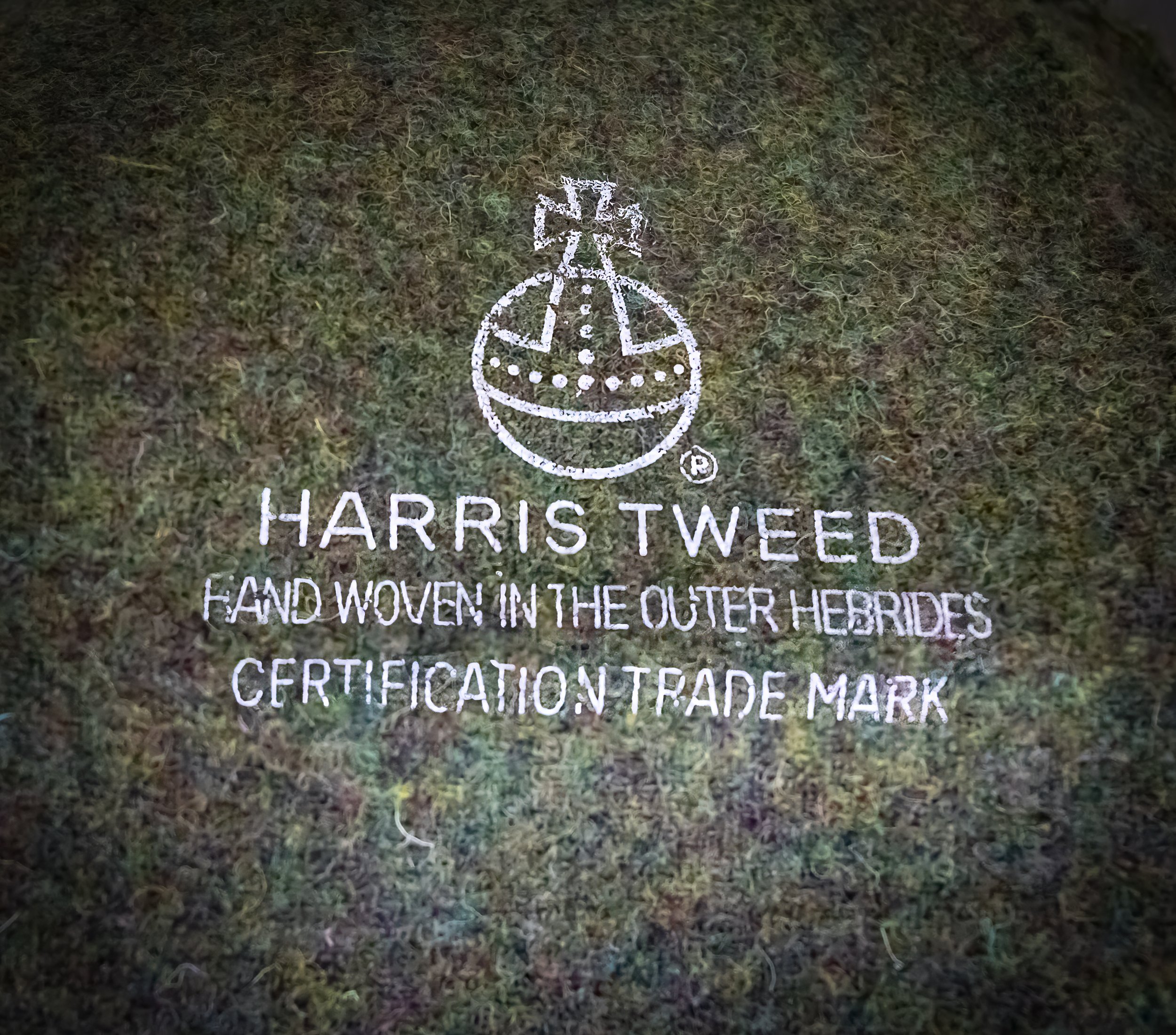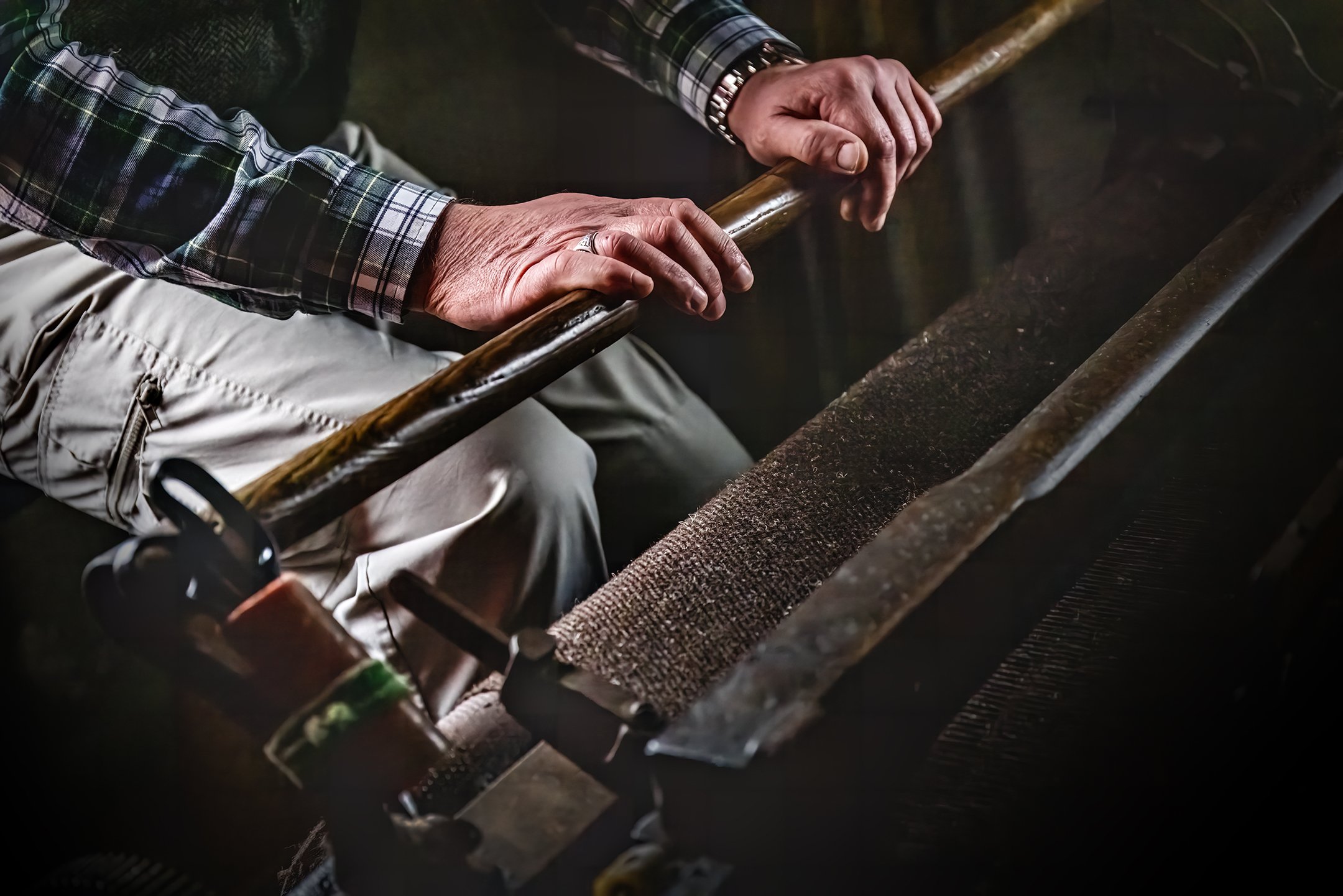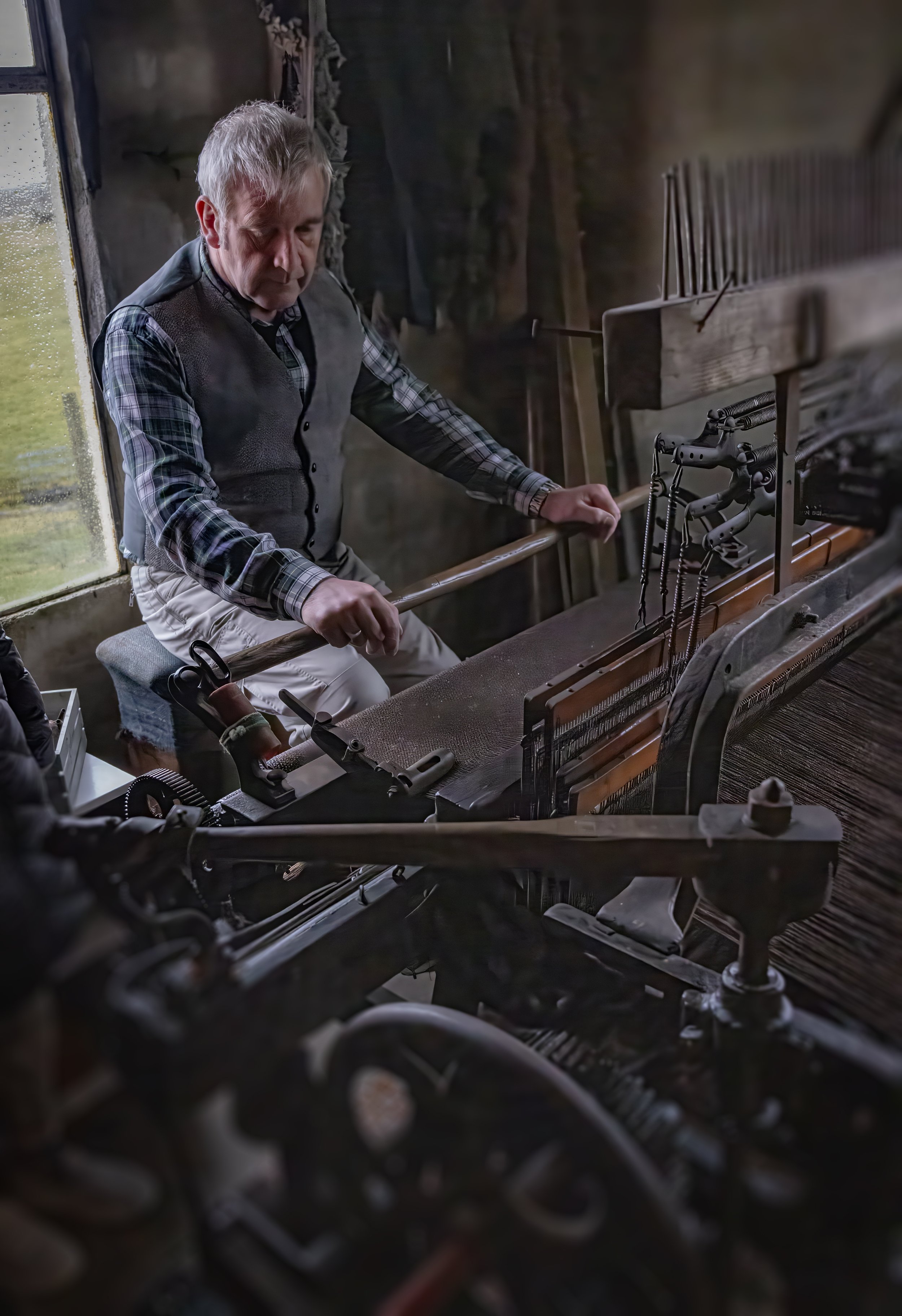In the heart of the Outer Hebrides, where the North Atlantic whispers tales of old, the fabric of the land is woven into the very threads of existence. This is the story of Harris Tweed, a cloth not merely made, but born from the rugged beauty of Scotland's outer Hebridean Islands, and the steadfast hands of its people. In a croft nestled between the moors and the sea, lives a weaver named Iain Martin. Iain is a man of the isles, with hands as weathered as the ancient rocks that dot the landscape and eyes as deep as the peat bogs that blanket the Hebridean earth. He is a guardian of a tradition that has coursed through his family's veins for generations, a tradition of crafting Harris Tweed. The tale of Harris Tweed is as rich as the soil and as enduring as the stone circles that watch over the land.
Iain’s first job at the age of five was putting the thread onto the bobbins which he would do this for two hours before school and two after. The machine used dates back over 100 years, there are no spare parts so it has to be kept in pristine condition.
It began centuries ago, when the islanders of Lewis, Harris, Uist, and Barra wove clò-mòr for their kin. This 'big cloth' was a testament to their resilience, a shield against the biting winds and a badge of their ingenuity. Iain's family story and subsequent employment, however, took root in the mid-nineteenth century when Lady Dunmore, widow of the Earl of Dunmore, saw the potential in the islanders' cloth. She had the Murray tartan replicated in tweed by the Harris weavers, and the fabric's fate was forever changed. It was no longer just a local treasure but a sought-after textile that would traverse oceans and grace the shoulders of the world's elite. Each day, the islanders would rise with the dawn, their cottages filled with the scent of wool and the constant ‘Clack, Clack, Clack’ sound of the loom. The process was a symphony of steps, each as crucial as the next. The wool, sourced mainly from the Scottish mainland, was dyed in vibrant hues that mirrored the Hebridean landscape—the blues of the sea, the greens of the hills, the yellows of the wildflowers. The colours were blended with precision, creating a palette as intricate as the patterns of the island's history. The yarn is spun with care, each twist strengthening the fibres, each bobbin a vessel of potential. Iain's loom is an extension of himself, a partner in the dance of creation. The warp and weft come together under his skilled hands, the shuttle darting back and forth as the fabric grows, inch by inch. But Harris Tweed is more than the sum of its parts.
Hand-crafting Harris Tweed from an original 1920’s loom.
It is the embodiment of the island's soul, a cultural icon protected by an Act of Parliament since 1993. The Harris Tweed Authority, the 'Guardians of the Orb', ensured that every inch of cloth bears the mark of authenticity, a promise that it is handwoven by the islanders at their homes, finished in the Outer Hebrides, and made from pure virgin wool. Iain's tweed is a canvas of the isles, each thread a story, each piece a legacy. The fabric passes through the hands of darning experts, who correct the smallest of flaws with a surgeon's precision. It is washed, beaten, dried, and pressed until it emerges flawless, ready to be stamped with the Orb and sent forth into the world.
As Iain weaves, he thinks of the journey his tweed will take—from the hands of the crofters to the runways of fashion capitals, from the backs of Hollywood stars to the interiors of luxury cars. Yet, no matter how far it travels, the essence of Harris Tweed remains rooted in the Outer Hebrides, a testament to the land and its people. And so, the legacy of Harris Tweed endures, a fabric woven into the very fabric of Scotland's history, a cloth that is not just made, but born from the heart of the Hebrides.
The ‘pedalling’ action of the loom allows the weaver to go on producing the tweed for a whole day.
Like most industries there are peaks and troughs and the Harris tweed industry was no different. A high point of over 7 million had-crafted yards had, by the mid 1990’s dwindled to a few thousand yards at best but in 1995 an unexpected hero was to appear on the horizon to revive a flagging and in fact, dying trade. Nike representatives appeared on the island looking for a unique material for their new project ‘The Terminator’ shoe. They were so impressed with the authentic and unique way the material was made that they signed an order straight away. The Islanders were happy that the order had come but were somewhat disappointed that Nike only required 900 yards. One of the executive team noticed there had been a mistake on the order, a ‘0’ had been left off and in fact the order was meant o be 9,000 yards. As the executives flew back to the USA another order for another 10,000 yards had appeared via fax, 19,000 yards! Fantastic. But how were a handful of weavers going to fulfil this incredible gift. As always in the history of the Hebrides, when something needed done, it got done. the whole community pulled together and fulfilled the order two weeks ahead of the scheduled delivery. Nike used Harris tweed extensively in the upper panels of their training shoes, including running and retro basketball styles and also a foldable shoe called the Pocket Knife. The tweed was primarily grey with thin interwoven fibres of blue, gold, and red colours. Nike ordered a large amount of Harris tweed from a selection of weavers which was "beyond their wildest dreams" and required them to enlist the help of many local weavers who had imagined the party was over. This large order from a major global brand like Nike was a significant boost for the Harris tweed industry. Nike's use of Harris tweed helped transform the image of the traditional Scottish fabric into a "young fabric, a stylish fabric for a new generation" and exposed it to a younger consumer market, which was seen as crucial for reviving the industry. As well as Nike, Harris Tweed has been used by Alexander McQueen, Chanel and Vivienne Westwood among many other A-list Design houses. Today Harris Tweed is just as likely to be featured on the catwalks of New York, London, Paris and Milan as it is to be worn by the crofters and fishermen of the Outer Hebrides.
Harris Tweed x NIKE Air Royalty Mid Leather Purple Sneakers






